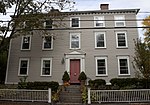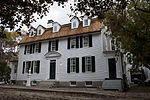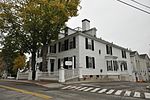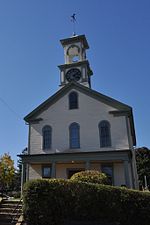Portsmouth Cottage Hospital
1884 establishments in New HampshireBuildings and structures in Portsmouth, New HampshireColonial Revival architecture in New HampshireHospital buildings completed in 1895Hospital buildings on the National Register of Historic Places in New Hampshire ... and 1 more
National Register of Historic Places in Portsmouth, New Hampshire

The Portsmouth Cottage Hospital was the first hospital built in the city of Portsmouth, New Hampshire. Opened in 1884, it was one of the first hospitals in New Hampshire, and it served as the city's primary hospital facility until 1986, when Portsmouth Regional Hospital opened. Its 1895 campus has been repurposed to house city offices and the police station, and a senior living facility. A portion of that facility, representing its oldest buildings, was listed on the National Register of Historic Places in 1996.
Excerpt from the Wikipedia article Portsmouth Cottage Hospital (License: CC BY-SA 3.0, Authors, Images).Portsmouth Cottage Hospital
Junkins Avenue, Portsmouth
Geographical coordinates (GPS) Address Nearby Places Show on map
Geographical coordinates (GPS)
| Latitude | Longitude |
|---|---|
| N 43.070555555556 ° | E -70.754722222222 ° |
Address
Junkins Avenue
03802 Portsmouth
New Hampshire, United States
Open on Google Maps











